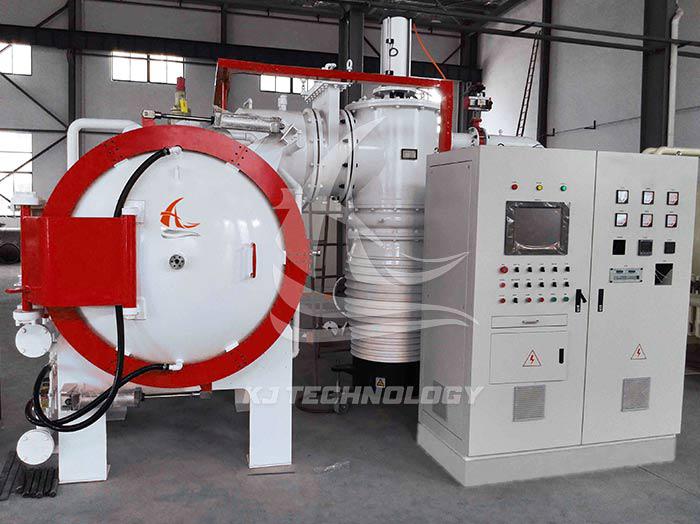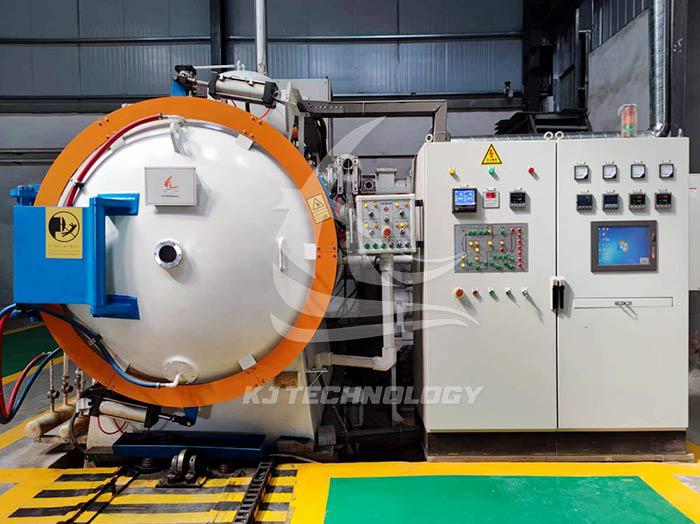How high temperature can a vacuum atmosphere muffle furnace achieve?
 09-12-2025 Author: KJ technology
09-12-2025 Author: KJ technology
The maximum working temperature of a vacuum atmosphere muffle furnace is usually between 1600 ℃ and 1800 ℃, and some specially designed equipment or high-end models can reach 2000 ℃ or even higher. The following is a specific analysis:
1. Core basis for temperature range
Laboratory equipment
Common temperature range: 1000 ℃ to 1800 ℃, meeting the needs of most material synthesis, heat treatment, catalytic reactions, etc.
Typical model: For example, a certain brand of box furnace has a maximum temperature of 1400 ℃ and a temperature control accuracy of ± 1 ℃, which is suitable for scenarios such as metal annealing and ceramic sintering.
High end model: Equipment using silicon molybdenum rod heating elements can reach 1800 ℃, with temperature control accuracy of ± 1 ℃ and uniformity of ± 5 ℃, suitable for extreme conditions such as graphitization and high-temperature sintering.
Industrial equipment
Higher temperature limit: Some industrial furnaces can reach 2300 ℃, suitable for large-scale heating, melting and other processes.
Structural optimization: Improve temperature resistance through special heating elements (such as graphite) or optimized furnace design (such as multi-layer composite insulation structure).
2. Application scenarios of temperature segmentation
Typical applications in temperature range
Low temperature heat treatment and testing from 200 ℃ to 500 ℃ (such as drying medicinal herbs and plastic aging testing).
Most materials science and chemical experiments (such as metal annealing and ceramic raw material dehydration) are conducted between 500 ℃ and 1500 ℃.
High temperature experiments from 1500 ℃ to 2000 ℃ (such as material melting, graphitization, and high-temperature sintering).
3. Key factors affecting the upper temperature limit
Heating element material
Silicon carbon rod: resistant to high temperatures of 1300 ℃ -1600 ℃, suitable for oxidizing atmospheres, but with poor thermal shock stability.
Silicon molybdenum rod: Long term use temperature of 1600 ℃ -1800 ℃, good thermal shock resistance, but relatively high price.
Graphite: can withstand temperatures above 2000 ℃, but needs to be used in an inert or vacuum environment to prevent oxidation.
Furnace structure
Insulation material: Adopting a multi-layer composite insulation structure (such as inner layer polycrystalline alumina ceramic fiber and outer layer lightweight insulation fiber board) to reduce heat loss.
Sealing design: Fluororubber O-ring or metal dynamic seal ensures vacuum environment stability and avoids air leakage at high temperatures.
Temperature Control System
PID intelligent control: By adjusting the heating power in real-time feedback, overshoot and oscillation are eliminated, and the temperature control accuracy can reach ± 1 ℃.
Multi stage programming: supports independent settings for heating, insulation, cooling, and other stages to meet complex process requirements.
4. Selection suggestions
Clarify requirements
If you need to process conventional materials such as metal annealing and ceramic sintering, you can choose equipment with temperatures ranging from 1200 ℃ to 1600 ℃.
If extreme conditions such as high temperature melting and graphitization are involved, equipment above 1800 ℃ should be selected, and the material of the heating element (such as silicon molybdenum rod or graphite) should be confirmed.
Pay attention to additional features
Atmosphere control: To prevent sample oxidation, choose equipment that supports the introduction of inert gases (such as nitrogen or argon).
Vacuum degree: High vacuum requirements (such as semiconductor processes) require confirmation of equipment vacuum degree (such as ≤ 1 × 10 ⁻ ³ Pa).
Safety: Check if it is equipped with functions such as over temperature alarm and thermocouple protection to avoid experimental risks.








